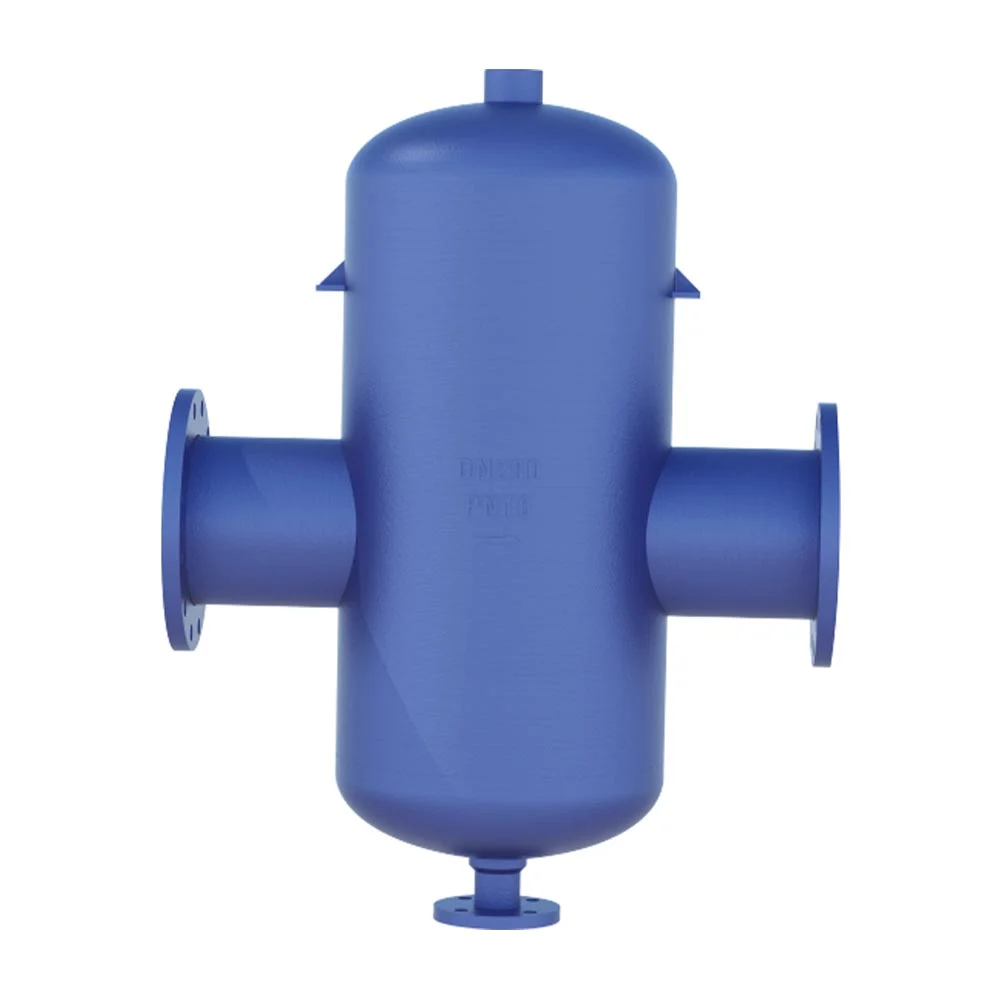A steam separator is a key piece of equipment used in industrial systems to separate steam from condensate or liquid impurities. It is widely used in steam systems in power plants, industrial production lines, chemical and petrochemical industries, etc.
Common types include cyclone, baffle, and combination types. These separators feature compact structures, high separation efficiency, and reliable operation. They effectively prevent water hammer, equipment corrosion, and product contamination, ensuring stable and efficient system operation.

Structure of a Steam Separator
Steam separators are typically equipped with various types of valves, such as drain valves, regulating valves, and safety valves. The components of different valve types vary. Here is a detailed explanation.
Common Components
Valve Body: The main supporting structure of the valve, used to mount and install other components. It withstands media pressure and connects to pipelines. It is usually made of cast iron, cast steel, or stainless steel.
Valve Cover: Located above the valve body, it seals and protects the internal components. It is usually bolted to the valve body.
Sealing Components: Including gaskets and packing. Gaskets are placed between the valve body and cover to prevent media leakage; packing is installed between the valve stem and cover to prevent leakage along the stem, ensuring the valve’s sealing performance.
Components Unique to Different Valve Types
Steam Trap (Using a Free Floating Ball Steam Trap as an Example)
Valve Seat: The sealing surface of the valve seat is usually made of Cr13 series stainless steel. It tightly seals against the valve core when closed, ensuring no steam leakage while allowing condensate to drain.
Float: As a key operating component, the free floating ball rises and falls with the condensate level. When condensate accumulates and the level rises, the float rises, opening the drain to discharge condensate; when steam enters, the float descends due to lower buoyancy, closing the drain and preventing steam leakage.
Regulating Valve
Valve Core: Available in various shapes such as spherical, piston, cylindrical, and conical, it is the core regulating component. It changes position with the movement of the valve stem, regulating steam flow, pressure, etc. For example, precise control of steam flow can be achieved by altering the flow area between the valve core and the valve seat.
Valve stem: Connects the actuator to the valve core, transmitting power from the actuator to the valve core, driving it to move linearly or rotate, thus adjusting the valve opening. The valve stem is usually made of stainless steel or similar material to ensure strength and corrosion resistance.
Actuator: Provides the power for the valve core’s movement. Types include electric, pneumatic, and hydraulic actuators. Electric actuators are driven by motors, pneumatic actuators use compressed air, and hydraulic actuators use fluid pressure. The actuator precisely controls the valve core’s position based on signals from the control system, thus regulating steam parameters.
Safety Valve
Valve disc: The key sealing component of the safety valve. During normal operation, the valve disc is tightly pressed against the valve seat by spring force or other loading mechanisms, preventing steam leakage. When the system pressure exceeds the set opening pressure, the valve disc opens, releasing steam to reduce system pressure.
Spring: Provides the closing force for the valve disc, keeping it closed under normal conditions. The spring’s stiffness and preload determine the safety valve’s opening pressure. By adjusting the spring preload, the opening pressure can be set.
Adjusting nut: Used to adjust the spring preload, thus adjusting the safety valve’s opening pressure. Rotating the adjusting nut changes the spring compression, altering the closing force on the valve disc, achieving precise adjustment of the opening pressure.
Working Principle of Steam Separator
The steam separator itself has no moving parts; it separates steam and liquid droplets by cleverly combining several physical principles. Its main working principles can be summarized as follows:
Inertial Separation
This is the core and most common working principle: utilizing the density and inertia differences between steam and liquid droplets. The steam-water droplet mixture enters the separator at high speed and impacts specially designed baffles or plates. The lighter steam easily changes direction, flowing around the baffles. The denser water droplets, due to their greater inertia, continue in their original direction, impacting the baffle surface. The water droplets accumulate and condense on the baffle and flow down the wall under gravity.
Centrifugal Separation
The separator’s internal design features special swirl plates or spiral channels, causing the incoming steam-water droplet mixture to rotate at high speed. During this rotation, the denser water droplets experience a stronger centrifugal force, forcing them towards the outer wall of the container. The water droplets then accumulate on the container wall, separating from the steam.
Gravity Separation
The separator’s chamber is typically much larger than the pipe diameter. When steam enters, its volume expands, and the flow velocity drops sharply, reducing its ability to carry water droplets. Larger water droplets naturally settle to the bottom of the separator due to gravity.
Application Areas
- Main steam pipelines (after long-distance transport and before equipment use)
- Before heat exchangers, heaters, and evaporators
- Before steam turbines
- Sterilization equipment, processing equipment, etc., requiring high-quality steam
Newton‘s steam separators are used to separate tiny liquid droplets from steam, compressed air, and other gas systems. Insulation jackets can enhance the separator’s performance. If you are looking for a reliable valve manufacturer, please contact us.

